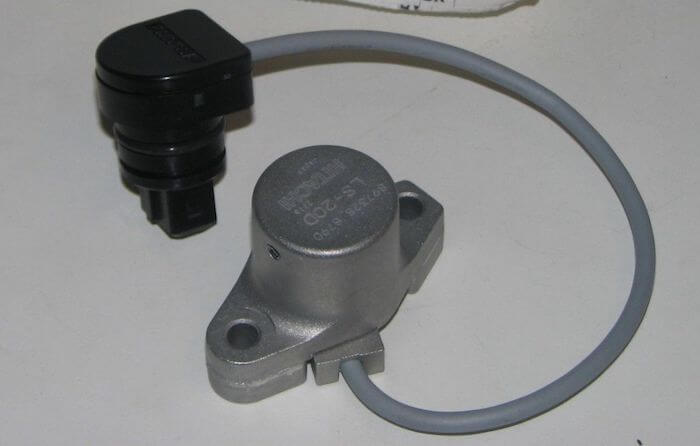
P250B Engine oil level sensor circuit out of range / performance
Content
- P250B Engine oil level sensor circuit out of range / performance
- OBD-II DTC Datasheet
- What does this mean?
- What is the severity of this DTC?
- What are some of the symptoms of the code?
- What are some of the common causes for the code?
- What are some steps to troubleshoot the P250B?
- What are the standard ways to fix this code?
- Related DTC discussions
- Need more help with a P250B code?
P250B Engine oil level sensor circuit out of range / performance
OBD-II DTC Datasheet
Engine Oil Level Sensor Circuit Out of Range / Performance
What does this mean?
This is a Generic Powertrain Diagnostic Trouble Code (DTC) applicable to many OBD-II vehicles (1996 and newer). This may include, but is not limited to, Honda, Acura, Volvo, Fiat, Kia, etc. While general, the exact repair steps may vary depending on the model year, make, model and transmission configuration.
OBD-II DTC P250B and associated codes P250A, P250C, P250D, P250E and P250F are associated with the engine oil level sensor circuit. This circuit is also known as the oil level safety circuit.
The engine oil level sensor circuit is designed to monitor the engine oil level and oil pressure to ensure that the internal engine components are receiving the correct amount of lubricant. The engine oil level sensor is usually installed inside or inside the engine oil pan, and its exact location depends on the vehicle. This process includes various components that must be performed depending on the configuration of the oil supply system.
When the PCM detects output voltage or resistance in the engine oil level sensor circuit or a performance problem, code P250B will set and the check engine light, engine service light, or both may light up at once. In some cases, the PCM may shut down the engine to prevent damage to internal engine components.
Oil level sensor: 
What is the severity of this DTC?
The code is serious and requires immediate attention. Insufficient lubrication or oil pressure can very quickly cause permanent damage to internal engine components.
What are some of the symptoms of the code?
Symptoms of a P250B trouble code may include:
- Engine won't start
- Low oil pressure gauge reading
- Service engine light will be on soon
- Check engine light is on
What are some of the common causes for the code?
Reasons for this P250B code may include:
- Oil level sensor defective
- Dirty or clogged oil pressure sensor
- Low engine oil level
- Engine oil level is too high
- Faulty or damaged wiring
- Corroded, damaged or loose connector
- Defective fuse or jumper (if applicable)
- Defective PCM
What are some steps to troubleshoot the P250B?
The first step in troubleshooting any problem is to review the vehicle-specific Technical Service Bulletins (TSBs) by year, model, and powerplant. In some cases, this can save you a lot of time in the long run by pointing you in the right direction.
The second step is to check the condition of the engine oil and make sure it is maintained to the proper level. Then locate all components associated with the engine oil level sensor circuit and look for obvious physical damage. Depending on the specific vehicle, this circuit may include several components, including an oil pressure sensor, switches, malfunction indicators, an oil pressure sensor, and a PCM. Perform a thorough visual inspection to check the associated wiring for obvious defects such as scratches, abrasions, exposed wires, or burn marks. Next, check the connectors and connections for security, corrosion and damage to the contacts. This process should include all electrical connectors and connections to all components including the PCM. Consult the vehicle specific data sheet to check the oil level safety circuit configuration and see if a fuse or fusible link is included in the circuit.
Advanced steps
The additional steps become very vehicle specific and require appropriate advanced equipment to be performed accurately. These procedures require a digital multimeter and vehicle-specific technical reference documents. In this situation, an oil pressure gauge can facilitate the troubleshooting process.
Voltage test
The reference voltage and allowable ranges may vary depending on the specific vehicle and circuit configuration. Specific technical data will include troubleshooting tables and appropriate sequence of steps to help you make an accurate diagnosis.
If this process detects that a power source or ground is missing, a continuity check may be required to verify the integrity of wiring, connectors, and other components. Continuity tests should always be done with power disconnected from the circuit and normal wiring and connection readings should be 0 ohms of resistance. Resistance or no continuity indicates faulty wiring that is open or shorted and requires repair or replacement. Continuity testing from the PCM to the frame will confirm the integrity of the ground straps and ground wires. Resistance indicates a loose connection or possible corrosion.
What are the standard ways to fix this code?
- Replacing or Cleaning the Engine Oil Level Sensor
- Oil and filter change
- Cleaning connectors from corrosion
- Repair or replace faulty wiring
- Replacing a blown fuse or fuse (if applicable)
- Repair or replacement of faulty grounding tapes
- Flashing or replacing PCM
General error
- Replace the engine oil level sensor when faulty wiring or connections cause this PCM to set.
Hopefully the information in this article has helped point you in the right direction to troubleshoot your engine oil level sensor circuit DTC problem. This article is for informational purposes only and specific technical data and service bulletins for your vehicle should always take priority.
Related DTC discussions
- There are currently no related topics in our forums. Post a new topic on the forum now.
Need more help with a P250B code?
If you still need help with DTC P250B, post a question in the comments below this article.
NOTE. This information is provided for informational purposes only. It is not intended to be used as a repair recommendation and we are not responsible for any action you take on any vehicle. All information on this site is protected by copyright.
